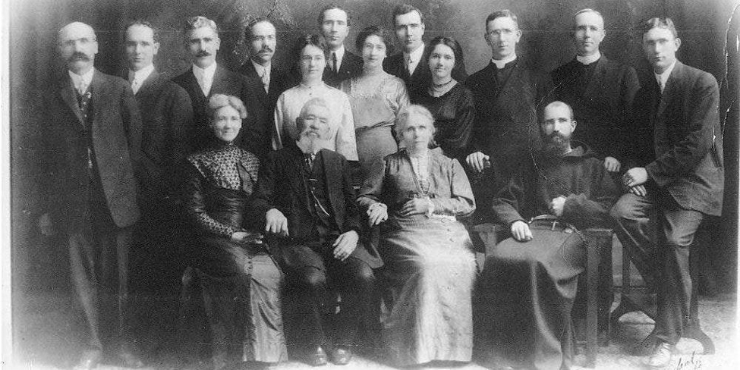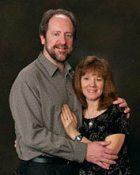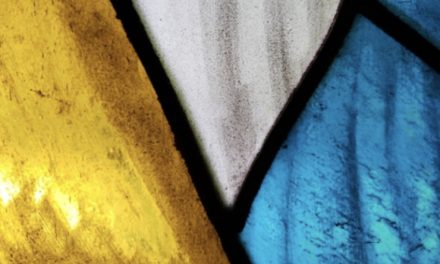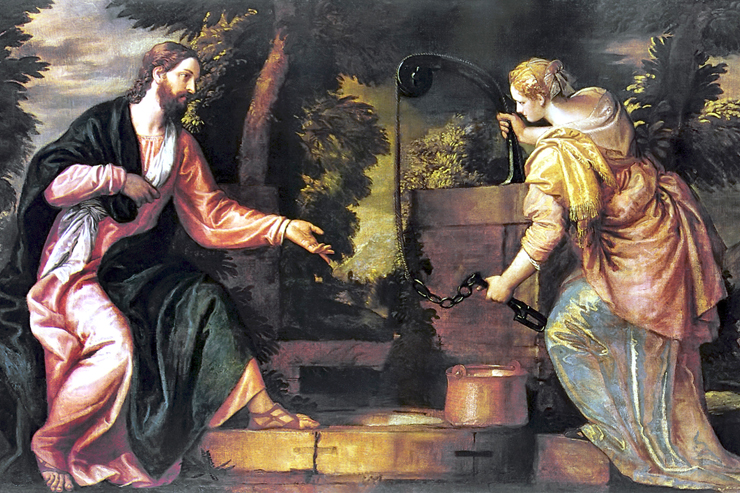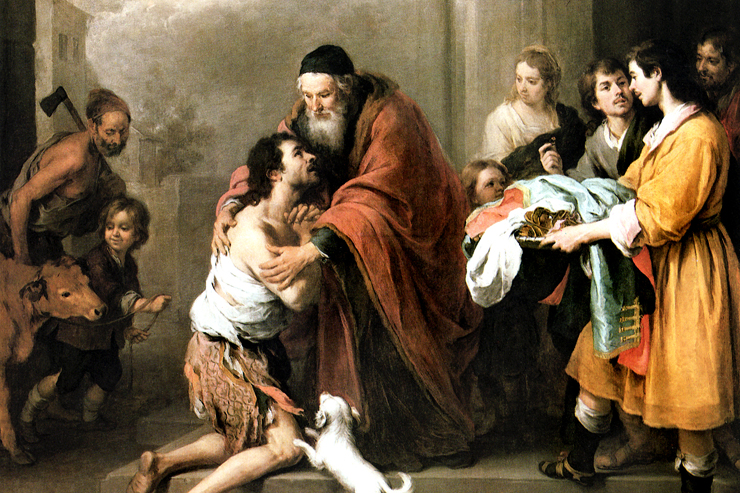
Father Solanus seated in his Capuchin habit with his family on his parents’ 50th anniversary in 1913.
(Courtesy of the Father Solanus Casey Guild)
On the Road to the Beatification of Father Solanus Casey; a special series for the Integrated Catholic Life by Mark Armstrong
 Tomorrow (11-18-17) is the Beatification Mass in Detroit, Michigan for Father Solanus Casey—over 66,000 people will be there.
Tomorrow (11-18-17) is the Beatification Mass in Detroit, Michigan for Father Solanus Casey—over 66,000 people will be there.
Yesterday we left Bismarck, North Dakota, overnighted with our son and his young family near St. Paul, Minnesota, and got up early this morning and are heading east towards Detroit. I am chauffeuring my wife Patti Maguire Armstrong who is on assignment for the National Catholic Register to cover this great event in United State Catholic history.
Indeed the man who will be beatified tomorrow is a rare case in our young republic of 241 years; only the second U.S. male citizen to be beatified in our Catholic Church. The first was Father Stanley Rother, a humble priest from the Archdiocese of Oklahoma City who was murdered in Guatemala in 1981 and beatified this past September in Oklahoma City.
Over the last couple of months, I have read an incredible amount of material about the life of Father Solanus. There are great resources at the Father Solanus Guild, the official website for the Beatification Mass and the Father Solanus Center. A recent book from Our Sunday Visitor Father Solanus Casey, Revised and Updated by Catherine M. Odell offers wonderful insights into the spiritual life and mind of Father Solanus. I highly recommend its reading for those who want to dive deeper into life of this simplex priest.
Here are the three things that I found most interesting, in no particular order.
Father Solanus Casey was born Bernard Francis Casey and was known as Barney in his youth among his large family and friends. His middle name of Francis came from Francis Solano who was canonized in 1726. St. Francis was a Spanish Franciscan who left for Peru in 1583 as a missionary. For twenty years he ministered to all without regard to rank or status, free or slave, Indian or Spaniard colonists. It is said that St. Francis had the “gift of tongues” as he could communicate to many different tribes. Padre Francisco Solano died in 1610 at the age of sixty-one and at his funeral Mass it was proclaimed that God had chosen him to be the hope to all Peru. This is the Saint who Father Solanus is named after. Both men enjoyed playing the violin, both men had a deep devotion to the Eucharist and prayer. Both men accepted that all people were God’s people and ministered to those most in need not worrying about whether they were Catholic, or non-believers.
It is not often in the last two hundred years of Church history that future Saints meet one another. Father Solanus, however, did meet a future Saint. What is remarkable about the encounter in 1935 between Father Solanus and the Brother André Bessette is the similarities between the two men. Ironically, both men, for many years, worked as doormen and porters, helping those who were visitors at their respective religious orders’ seminaries and monasteries. Even as both men’s reputations grew as healers and miracle workers, their station did not. For his entire priesthood, Father Casey would be a simplex priest (without faults to preach or hear confessions). Both Brother André and Father Casey never protested the long hours or the treatment they received from some of their superiors.
God’s Doorkeeper: St. André of Montreal, published by Ignatius Press, is an excellent resource about the remarkable life Brother André.
There is not any film footage or even still photo shots of the two future saints meeting on that sunny, 1935 summer day in Detroit. Father Solanus was sixty-five and Brother André was ninety. Brother André had heard of Father Solanus and while he was visiting the monastery and inquired about his whereabouts. The two men met, but were unable to engage in conversation as Father Casey did not understand French and Brother André did not understand English. However, they did the only thing they could do in one language; they blessed each other in Latin, the language of the Church. Their brief meeting over, both returned to his work, although for Brother André, his work would continue for less than two years. He died in Montreal in January 1937 and was eventually declared a Saint in 1995. Father Casey would continue his work for some twenty years until he passed away in 1957 and was declared Venerable in 1995.
 Three of the brothers in Father Solanus’ family of ten brothers and six sisters were eventually ordained to the Catholic priesthood. According to aa post in The Catholic Spirit by Susan Klemond, Maurice was three years older than Father Solanus. Maurice had thought about being a priest before his younger brother’s ordination in 1904. Father Solanus’ ordination rekindled Maurice’s desire and was ordained for the Diocese of Helena, Montana, at age forty-four in 1911. He spent ten years in Montana, including on the Blackfeet Indian Reservation.
Three of the brothers in Father Solanus’ family of ten brothers and six sisters were eventually ordained to the Catholic priesthood. According to aa post in The Catholic Spirit by Susan Klemond, Maurice was three years older than Father Solanus. Maurice had thought about being a priest before his younger brother’s ordination in 1904. Father Solanus’ ordination rekindled Maurice’s desire and was ordained for the Diocese of Helena, Montana, at age forty-four in 1911. He spent ten years in Montana, including on the Blackfeet Indian Reservation.
In 1921 Father Maurice was assigned to the Basilica of St. Mary in Minneapolis. In 1929 he joined Father Solanus’ community, the Capuchin Franciscan Province of St. Joseph. In the early 1940s, Father Maurice returned to serve in the Minneapolis archdiocese until his death in 1949.
Edward Casey, nine years younger than Father Solanus, attended the St. Paul Seminary and was ordained in 1912. For the first two years of his priesthood, along with serving at St. Mary’s in St. Paul, Father Edward was assistant editor of the Catholic Bulletin, now The Catholic Spirit.
In 1928, Father Edward left Minnesota to serve first in Australia and then near Manila, Philippines. In 1938, Pope Pius XI gave Father Edward the title “Monsignor” for his work with Filipino parochial schools.
During the final year of World War II, Father Edward was a Japanese prisoner of war. When he returned to Minnesota, he raised money for the Diocese of Lipa, Philippines, and later he was a hospital chaplain in Superior, Wisconsin, until his death in 1962.
Father Solanus spent his life in the service of all people he encountered. As the humble doorman, he met thousands of persons from every age and walk of life. In time of trouble and sorrow, they sought his prayers and advice. Many attributed favors to his prayers. He constantly showed his love of God by loving all of God’s people. He was always ready and willing to listen to anyone any time of the day or night.
During his final illness, he remarked: “I’m offering my suffering that all might be one. If only I could see the conversion of the whole world.” His last conscious act was to sit up in bed and exclaim, “I give my soul to Jesus Christ.” He died in Detroit at the age of eighty-six on July 31, 1957, and is buried at St. Bonaventure Monastery.
Tomorrow, Saturday, November 18, we will be at the Beatification Mass of Father Solanus at Ford Field in Detroit and will post live on Facebook if you want to see some of the fun before and after the Mass you can watch there at www.facebook.com/markarmstrong2. I will also post up a final article for Integrated Catholic Life after the Mass, as well.

